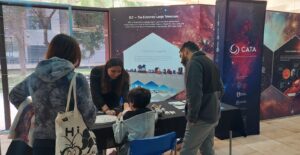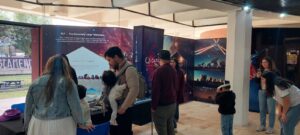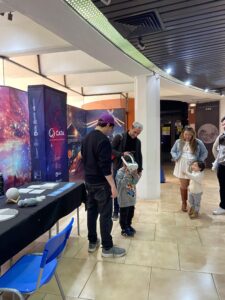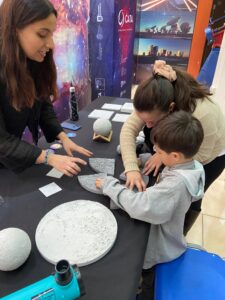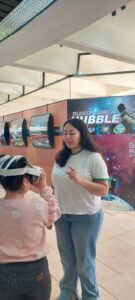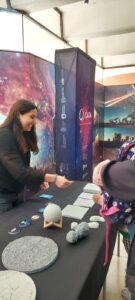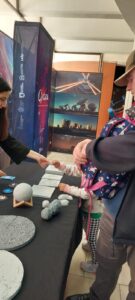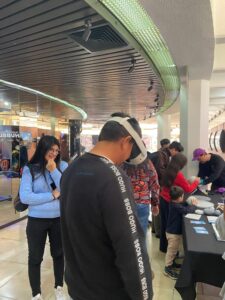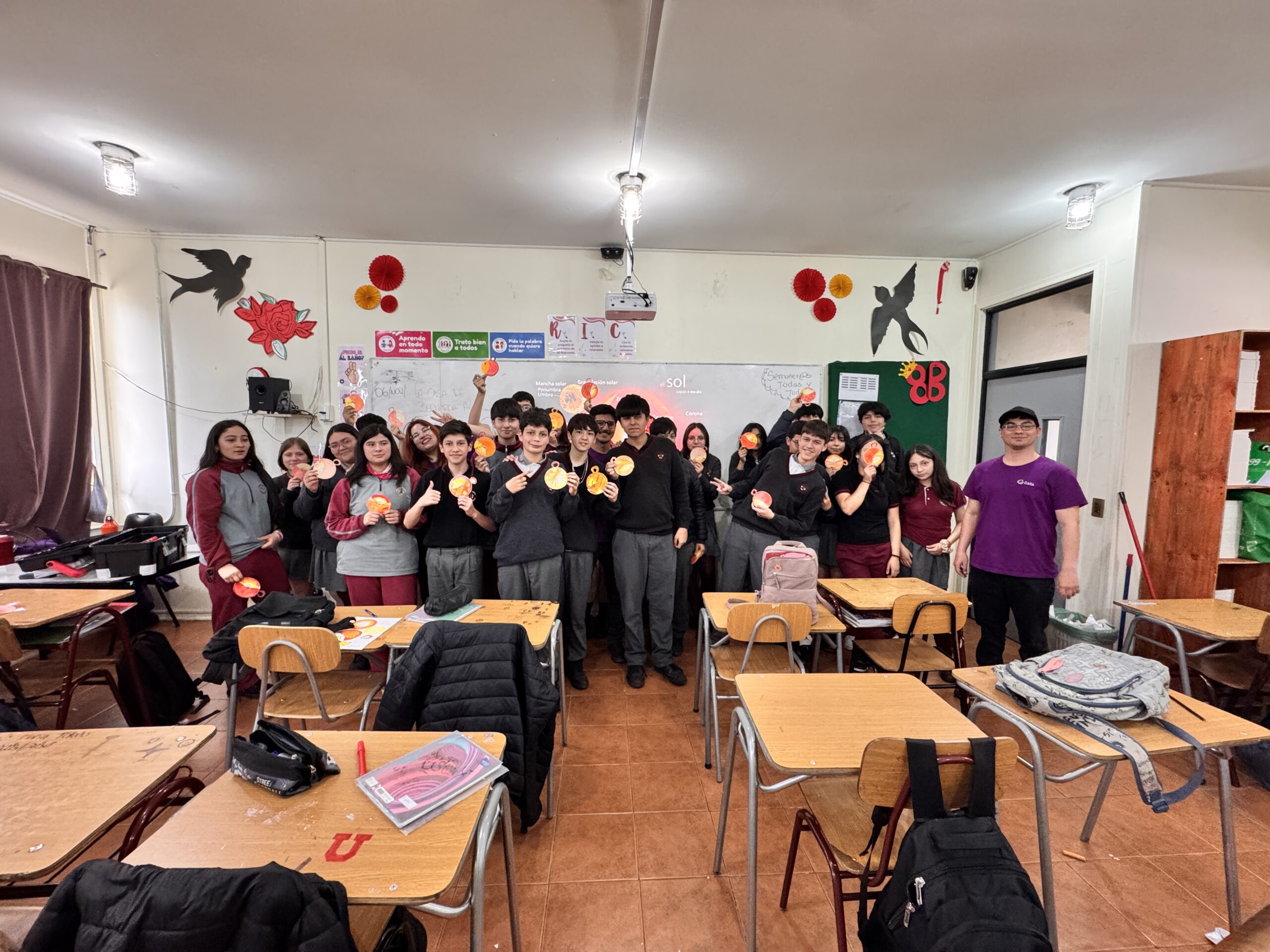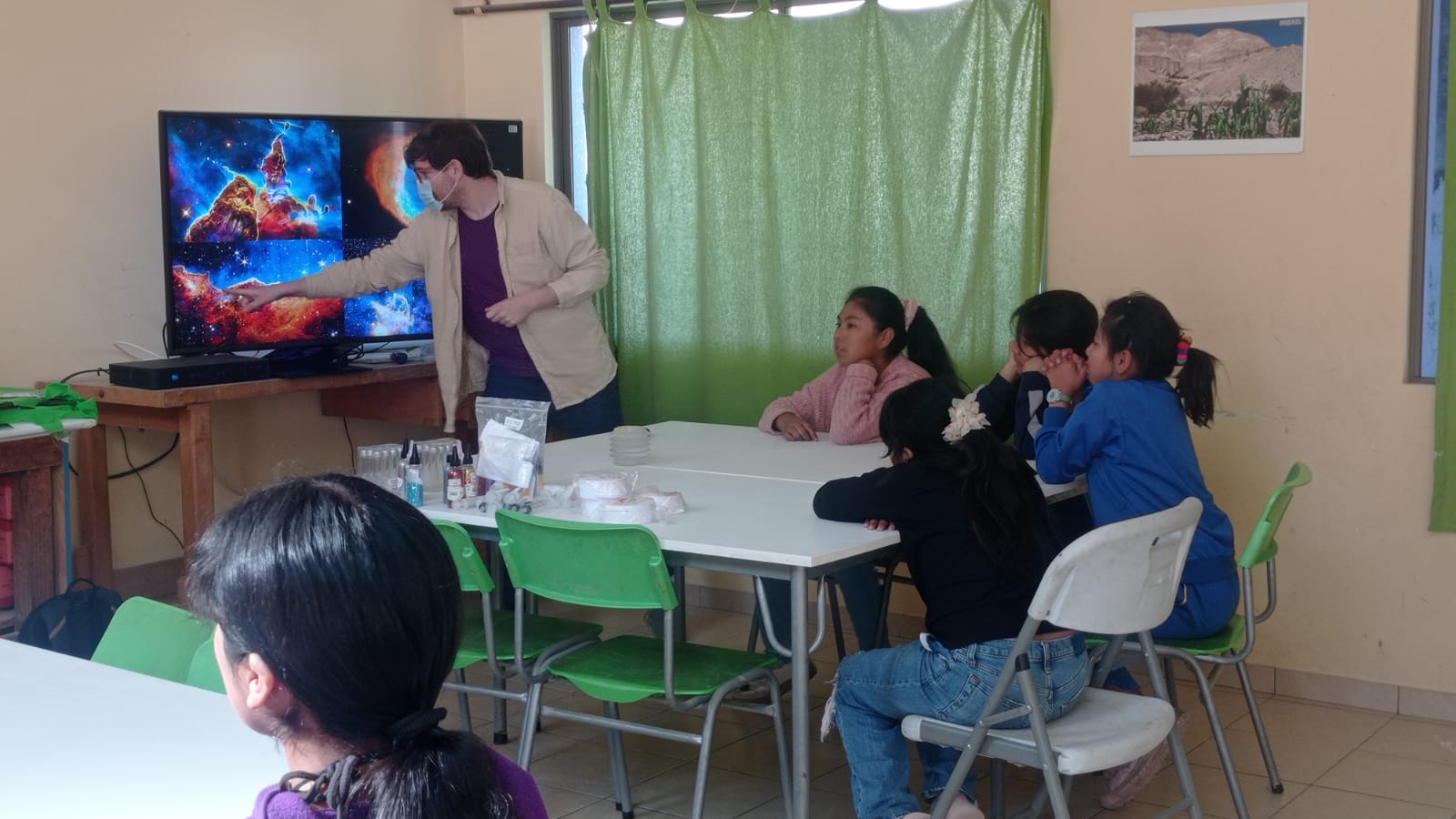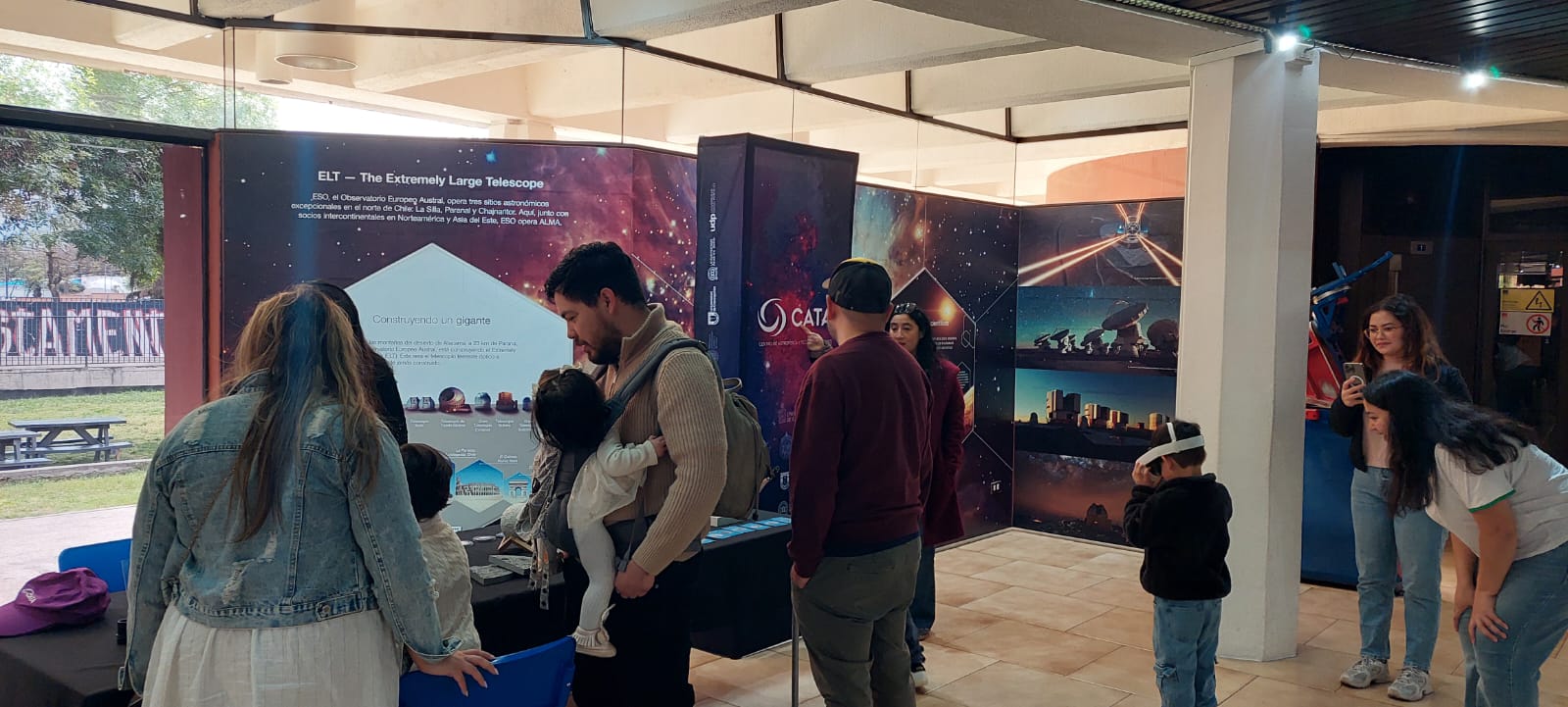
CATA participated in the “100 Hours of Astronomy” event at the USACH Planetarium
Our Center participated in the activity promoted by the International Astronomical Union (IAU), carrying out various activities and hosting a talk by Associate Researcher Timo Anguita.
The Center for Astrophysics and Associated Technologies (CATA) (ANID Basal Center) participated in the event “100 Hours of Astronomy”, held at the Planetarium of the University of Santiago, Chile (USACH). This event, organized by the International Astronomical Union (IAU), is a celebration that seeks to bring astronomical science to people of all ages.
Our Center attended with its Moon stand, virtual reality glasses showing images of the universe, and the big boys from Alien and Astronaut. In addition, Timo Anguita, Associate Researcher at CATA and academic at Andrés Bello University (UNAB), gave a talk. “Gravitational lenses, eclipses, and the first demonstration of general relativity,” for the general public.
“My talk focused on explaining the phenomenon of gravitational lenses, mainly the deflection of light, which is a direct consequence of the theory of general relativity. Deflection was the first demonstration of Einstein’s theory, and I told the story of how this demonstration came about using solar eclipses. I ended by talking more about the phenomenon, its properties, and how we use it as an astronomical tool,” explained the astronomer.
The UNAB academic also highlighted the reception from attendees and CATA’s role in bringing science outreach to the public. “The reception was excellent. There weren’t many people, but there was a lot of interest. There were lots of questions and discussion. The attendees were very grateful for the experience. I believe that centers like CATA have a responsibility to engage in scientific outreach. But not only that, it is also very valuable for researchers to see the interest and even excitement that astronomy generates in people,” said Timo Anguita.
Finally, José Utreras gave a positive assessment of CATA’s participation in the “100 Hours of Astronomy”. “The families who visited us enjoyed seeing and touching the Moon up close, as well as having time to talk. It is always a pleasure to carry out astronomy activities at the Santiago Planetarium. With so many astronomy enthusiasts in one place, very good questions arise,” concluded Utreras, CATA’s Outreach and Content Coordinator.
Recent news
-
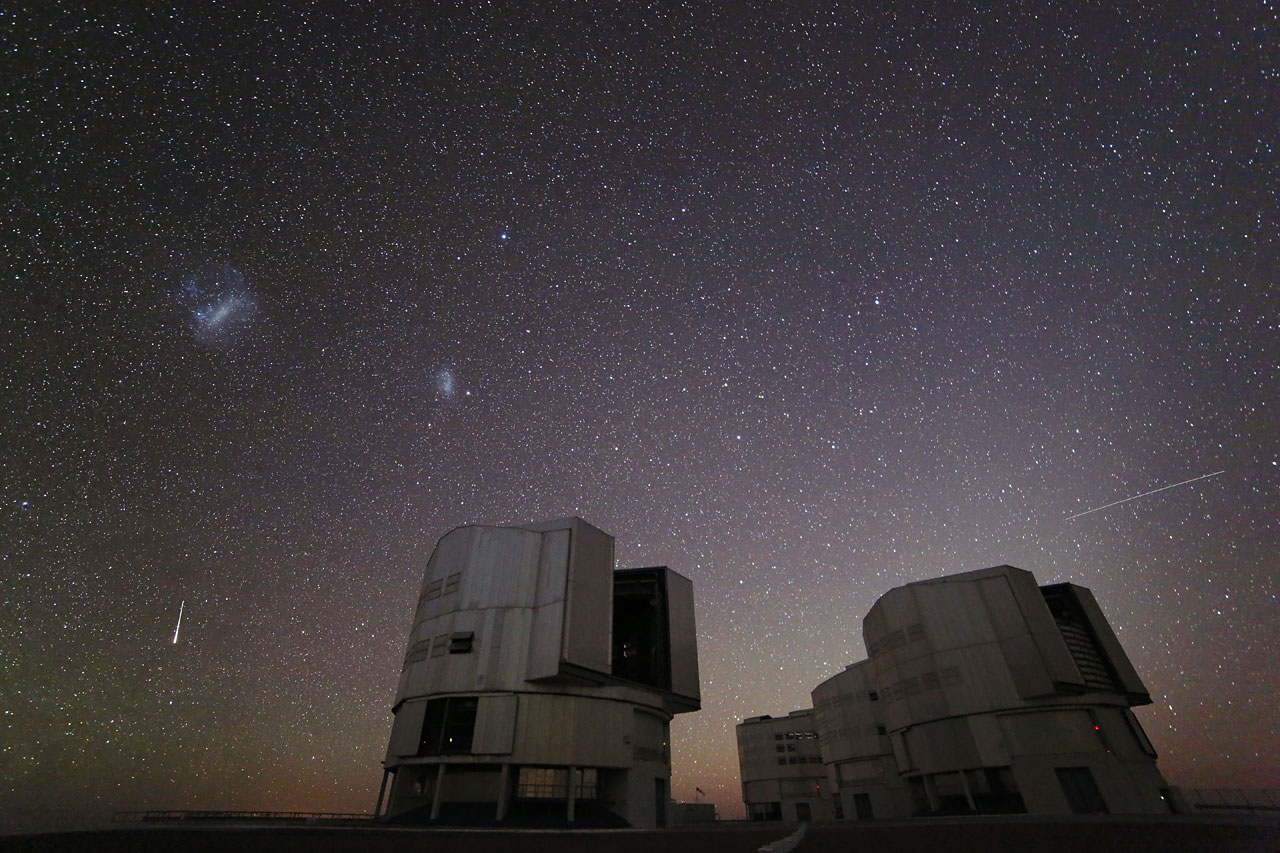 Publicado el: 13/12/2025Geminids 2025: facts and how to observe the last meteor shower of the year
Publicado el: 13/12/2025Geminids 2025: facts and how to observe the last meteor shower of the year -
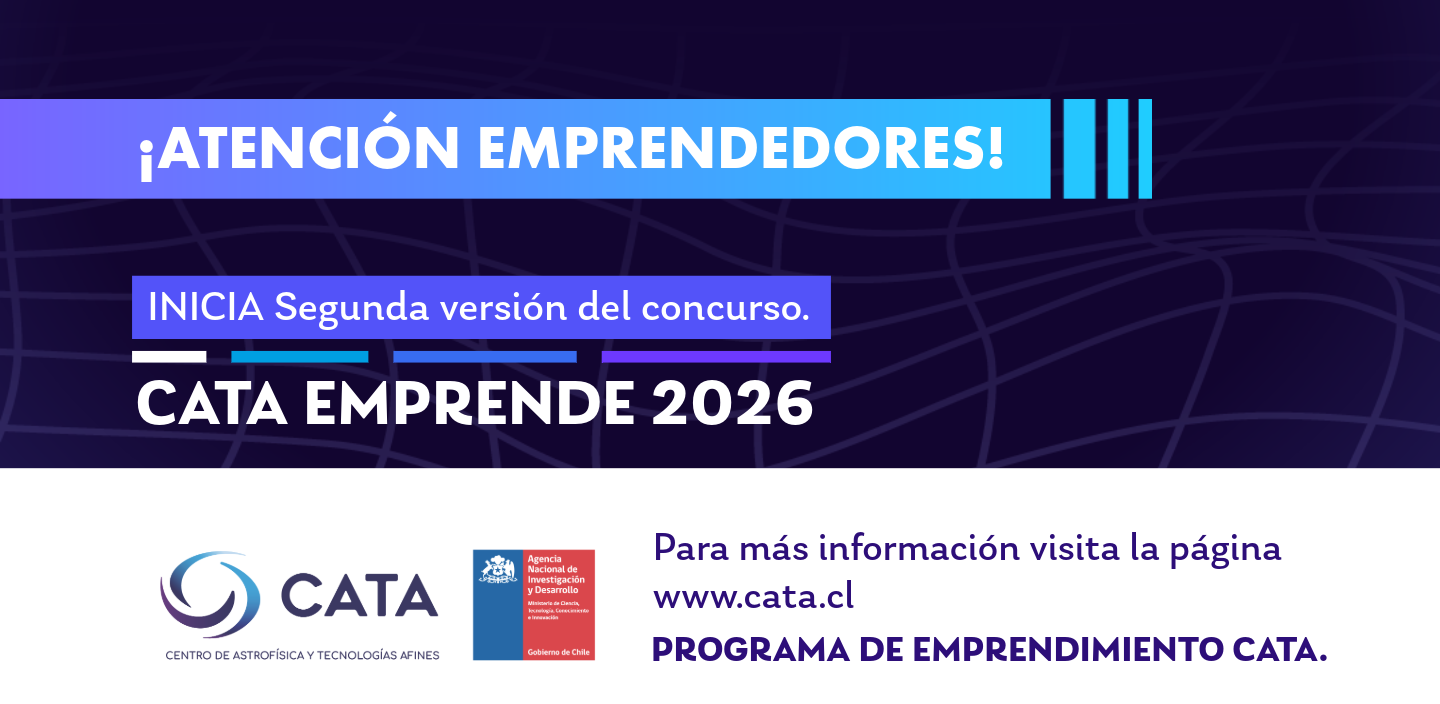 Publicado el: 12/12/2025Call for applications for the CATA Emprende 2026 program now open
Publicado el: 12/12/2025Call for applications for the CATA Emprende 2026 program now open -
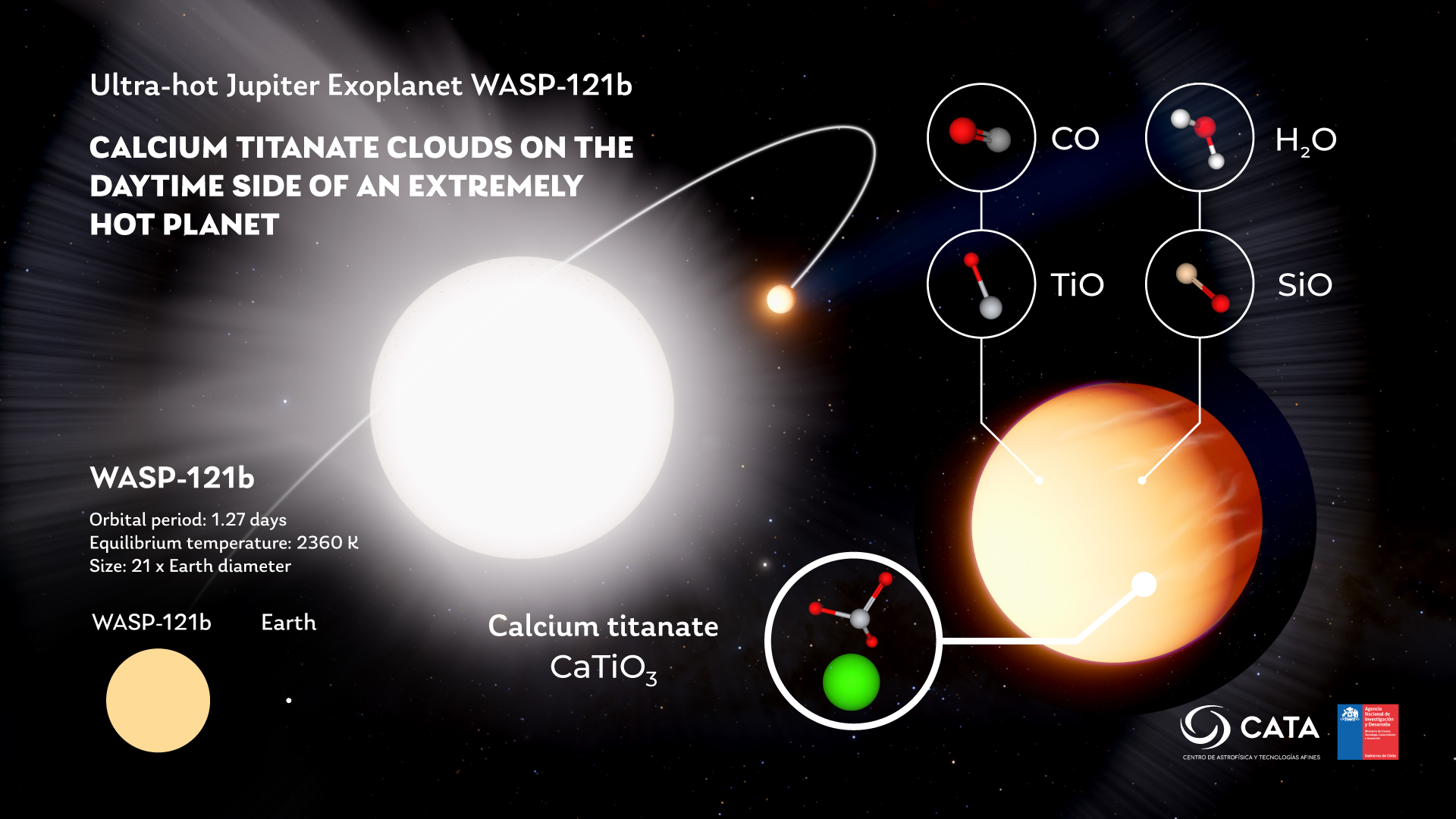 Publicado el: 09/12/2025CATA researchers detect titanate clouds on ultra-hot exoplanet
Publicado el: 09/12/2025CATA researchers detect titanate clouds on ultra-hot exoplanet -
 Publicado el: 05/12/2025CATA launches Applied Research Fund 2026
Publicado el: 05/12/2025CATA launches Applied Research Fund 2026 -
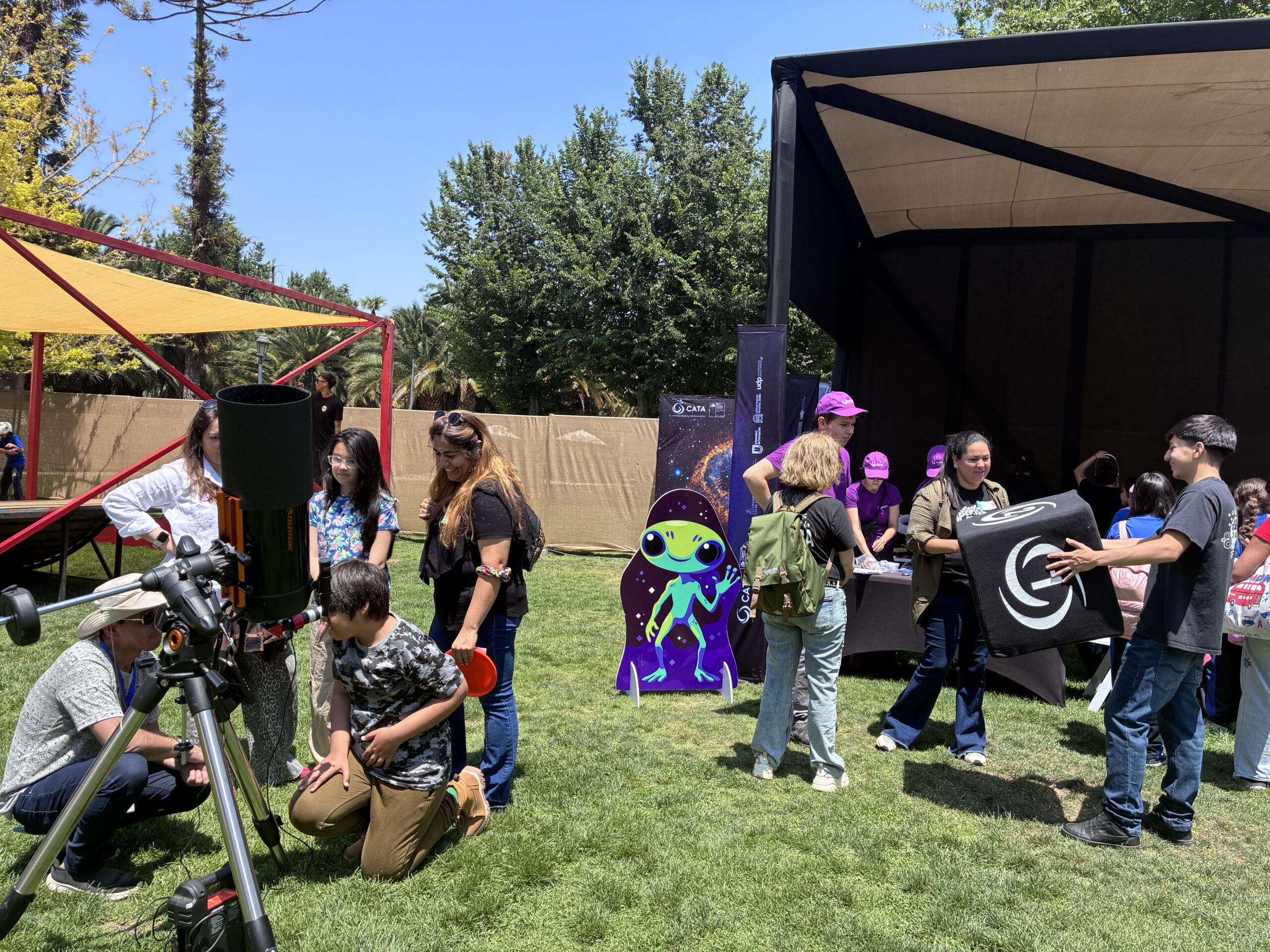 Publicado el: 01/12/2025The astronomical experience was part of the 4th Ladera Sur Festival.
Publicado el: 01/12/2025The astronomical experience was part of the 4th Ladera Sur Festival.
Categories list
- Acknowledgments 21
- Astrobiology 6
- AstroCluster 1
- Black holes 19
- Corporativo 57
- Cosmology 5
- Descubrimientos 23
- Disclosure 74
- Exoplanets 14
- Extension 7
- Galaxies 21
- Galaxies formation 5
- Inter y Transdisciplina 4
- Local Universe 16
- Publications 6
- Sin categorizar 34
- Solar System 22
- Stellar formation 8
- Technology 16
- Technology Transfer 18
